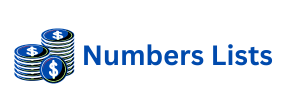Content writing stands as a cornerstone of modern digital strategy. It is far more than just stringing words together. Effective content connects with audiences. It also helps search engines understand your message. This dual purpose drives its immense value. Today, the focus has shifted significantly. We now move beyond simple keyword repetition. Instead, a deeper understanding of search intent is paramount. Quality content must serve both readers and complex algorithms. This ensures visibility and meaningful engagement for any online presence.
The Core of Effective Content Writing in Digital Marketing
Modern content writing defines your brand’s voice. It builds authority and trust. It provides value to your target audience. In the digital landscape, content is king. However, this king now demands semantic depth. It requires a nuanced approach to topics. Search engines, like Google, have evolved greatly. They no longer just match keywords. They interpret the meaning behind queries. This means your content must do the same. It must explore topics thoroughly. It needs to cover related concepts effectively.
A semantic SEO approach is essential here. It means creating content that satisfies user intent. It also answers implicit questions. This strategy moves beyond single keywords. It embraces entire topic clusters. Understanding these connections is crucial. It informs every step of the writing process. From initial research to final editing, semantics guide the way. This ensures your content is not only readable but also highly discoverable. It helps connect with a broader, more engaged audience segment.
Understanding Search Intent and Entity-Based Content
Semantic search is a powerful concept. It allows search engines to grasp context. They understand the relationships between entities. Entities are real-world objects, concepts, or people. When you write content, consider these entities. How do they relate to your main topic? Covering these relationships adds depth. It signals comprehensive knowledge. This enhances your content’s authority greatly. It helps search engines categorize your information better. Users receive more relevant results.
Your content must align with search intent. What is the user truly looking for? Are they seeking information? Do they want to make a purchase? Is it a navigational query? Tailoring content to intent is vital. For example, a “how-to” guide serves informational intent. A product review caters to commercial investigation. An effective Content Strategy always begins here. It considers the user’s journey. It maps content pieces to different stages. This ensures every piece serves a clear purpose effectively.
Leveraging External Backlinks for Authority and Trust
External links play a significant role in SEO. They are signals of trust and authority. When authoritative sites link to yours, it boosts your credibility. Similarly, linking out to other strong sources can be beneficial. It shows you’ve done your research. It provides additional value to your readers. This practice demonstrates a commitment to accuracy. It also offers further reading options for interested users. This enhances the overall user experience greatly.
Strategic use of an SEO Best Practices approach includes thoughtful external linking. Do not link just for the sake of it. Choose sources that are highly relevant. Ensure they are reputable and trustworthy. These links should complement your content. They should offer supplementary information. High-quality external links are like academic citations. They validate your claims. They contribute to a rich web ecosystem. This careful linking helps your content rank higher over time.
The Strategic Role of Internal Backlinks for Site Architecture
Internal links are equally important for SEO. They connect pages within your own website. This helps search engines understand your site structure. It shows them which pages are most important. Internal links also distribute “link equity” or “PageRank.” This means they pass authority from stronger pages to weaker ones. This strengthens your entire site’s SEO profile. It enhances the visibility of all your key content. A robust internal linking structure is a powerful tool.
Beyond SEO, internal links improve user navigation. They guide visitors through your content. They help them discover related topics easily. This keeps users on your site longer. Increased time on site can signal engagement to search engines. It can reduce bounce rates. Both factors are positive for SEO performance. Plan your internal links carefully. Create logical pathways between your content pieces. This holistic approach benefits both users and search engines substantially.
Crafting Engaging Narratives and Value-Driven Content
Ultimately, content must be engaging. It needs to tell a story. It should resonate with your audience emotionally. While SEO is crucial, always write for humans first. Use clear, concise, and compelling language. Break up large blocks of text. Employ subheadings, bullet points, and short paragraphs. This improves readability significantly. Easy-to-read content is more likely to be shared. It is also more likely to achieve its intended goal. Focus on providing genuine value to your readers.
Every piece of content should address a problem. It should offer a solution. It might answer a specific question. This value-driven approach builds loyalty. It establishes your brand as an expert. Consistency in quality is non-negotiable. Regularly audit your content. Update it to ensure accuracy and relevance. This continuous effort sustains your online presence. It drives long-term success in the competitive digital landscape. High-quality content is an investment in your future.
